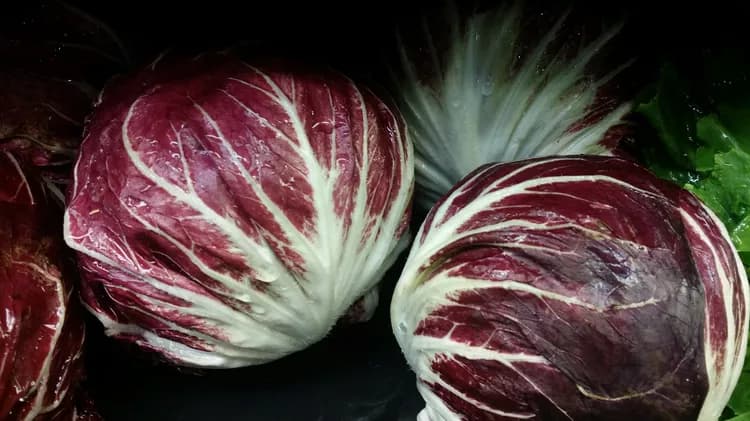Radicchio or Italian chicory is a leaf chicory vegetable (Cichorium intybus, Asteraceae) that has white-veined red leaves. It has a bitter and spicy taste, which softens when it is grilled or roasted. The chicory is often confused as red cabbage, but there are a few differences. Radicchio's leaves are thinner and tenderer unlike red cabbage's firm and waxy texture. Radicchio is burgundy-red with white streaks, whereas the red cabbage is purpler.
Here are the 7 health benefits of radicchio.
1. Radicchio can help fight against malaria.
Radicchio is rich in the bitter substance lactucopicrin. A study from the Massachusetts General Hospital has suggested the antimalarial activity of lactucopicrin found in radicchio.
2. Radicchio can help promote better eye health.
Although radicchio contains very low amounts of vitamin A, it possesses a high amount of phenolic flavonoid antioxidants, such as zeaxanthin and lutein. One hundred grams of the leaves provide 8832 micrograms of these compounds. Zeaxanthin concentrates mainly in the central retina in the eyes. Together with lutein, it helps protect eyes from age-related macular disease by filtering harmful ultraviolet rays.
3. Radicchio can contribute to assist in weight loss.
Radicchio is low in calories while making consumers feel fuller without consuming more calories. One cup of radicchio contains only nine calories. This is a great food to eat to help one lose weight.
4. Radicchio can help lower your blood pressure.
Radicchio contains the phytonutrients lycopene, ellagic acid, and quercetin. Studies have shown to decrease the systolic blood pressure – the pressure in the arteries when the heart beats. Radicchio also contains much more potassium than sodium. Potassium contributes to the reduction of hypertension and relaxes blood vessels while maintaining proper blood flow.
5. Radicchio can help your bones stay healthy and strong.
One cup of radicchio contains 128 percent of the needed vitamin K. Adequate vitamin K consumption acts as a modifier of bone matrix proteins, improves calcium absorption, preventing bone loss and osteoporosis.
6. Radicchio may contribute to improving your thinking ability.
Several components of radicchio, such as potassium, folate, and various antioxidants are known to provide neurological benefits. Folate has been known to reduce the occurrence of Alzheimer’s disease and cognitive decline. Potassium has been linked to increased blood flow to the brain and enhance cognition, concentration, and neural activity. One cup of radicchio contains 6 percent of the recommended daily needs of folate.
7. Radicchio can aid in digestion.
Radicchio aids digestion and colon cleansing by its fiber content. Also, radicchio has been used to fight intestinal worms and parasites to significant effect. Lastly, radicchio promotes bile production, which improves digestion and reduces cholesterol.
Related Articles
Test Your Knowledge
Asked by users
Related Centers
Related Specialties
Related Physicians
Related Procedures
Related Resources
Join DoveHubs
and connect with fellow professionals


0 Comments
Please log in to post a comment.